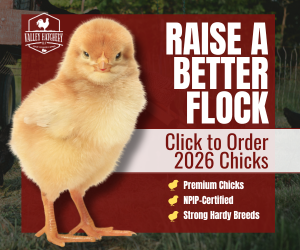- Thread starter
- #11
Quote:
I don't know how to hypnotize and I did not use anaesthetic of any kind! I know that the bird feels some pain but I have no idea how much. I just think that I am giving roosters a better life than to be destroyed at the hatchery as an unwanted chick.
I clean the instruments with alcohol and paper towels the best I can.
Quote:
I did not leave any intact roosters but that is a good idea to try someday.
I don't know how to hypnotize and I did not use anaesthetic of any kind! I know that the bird feels some pain but I have no idea how much. I just think that I am giving roosters a better life than to be destroyed at the hatchery as an unwanted chick.
I clean the instruments with alcohol and paper towels the best I can.
Quote:
I did not leave any intact roosters but that is a good idea to try someday.




